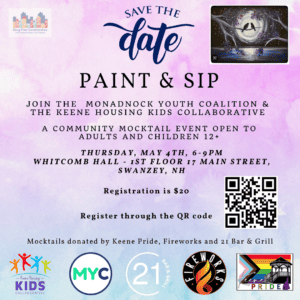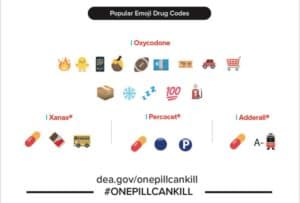Alcohol Awareness Month
April is Alcohol Awareness Month, a month dedicated to increase knowledge about alcohol and its impact on health and society.
- Written on: April 8, 2024
- Writen By: Jillian O'Neil
What is National Alcohol Awareness Month
Founded by NCADD, alcohol awareness month was established in 1987 to help reduce the stigma around alcoholism by encouraging communities to reach out each April with information about alcohol, alcoholism, and recovery. Alcohol Awareness Month provides an opportunity across America to increase awareness and understanding of alcoholism and effective treatment and recovery. This is an opportunity to decrease stigma to dismantle the barriers to treatment and recovery therefore making seeking help more accessible to those who suffer with this disease.
How Has Alcohol Use Changed
Alcohol use has risen and fallen dramatically in the past couple decades. Since the founding of National Alcohol Month in 1987, laws and policies have been made that tried to change the direction of alcohol use in America. In 1988, the Alcoholic Beverage Labeling Act was passed requiring that alcoholic beverage containers be labeled with health warnings about drinking during pregnancy and while operating a motor vehicle or any kind of machinery. Also in 1988, the minimum legal drinking age law was instituted and made it illegal to purchase alcohol under 21 years of age. Public health campaigns and awareness efforts spread the risks of excessive alcohol consumption leading to a gradual decline in drinking trends. However, the rise in craft beers has increased the influence of alcohol consumption patterns. Consumers are now interested in the quality, flavor, and variety leading to an increased consumption of these products.
Changes in Media
With everyone on social media it’s impossible to not see advertisements and promotions for alcohol brands. Celebrities and influencers often promote these brands which can give vulnerable populations the wrong message about drinking responsibly. Alcohol use is also a common theme in music lyrics and music videos. They promote drinking as a solution to problems such as not having a good time or going through heart break. Despite the rise in social media and advertisement of alcohol, there has been a cultural shift in the last decade focused on wellness and mindfulness. There is now more awareness surrounding the negative effects of alcohol on physical and mental health. Just as people are seeing the portrayal of drinking in media and television, they also have access to evidence-based research that points to the health risks of excessive drinking and underage drinking.
What Treatments Are Available?
Behavioral treatments:
- Cognitive Behavioral therapy: Working one on one with a licensed counselor.
- Motivational Enhancement therapy:
- Marital and Family counseling:
- Brief Interventions:
Behavioral Treatments Feature:
- Developing the skills to needed to stop or reduce drinking.
- Helping to build a strong social support system.
- Working to set reachable goals.
- Coping with or avoiding the triggers that can lead to relapse.
FDA approved medications:
- Naltrexone: Can help reduce heavy drinking.
- Acamprosate: Makes it easier to maintain abstinence.
- Disulfiram: Blocks the breakdown of alcohol in the body, causing unpleasant symptoms when alcohol is ingested.
(It’s important to remember that taking medications is not “trading one addiction for another”. All medications approved for treating alcohol dependence are non-addictive. These medicines are here to treat chronic disease and are not so different from taking medicine to help with diabetes or asthma.)
Mutual Support Groups: Such as AA
Primary Care Doctor: Talking with your PCD can be a great first step to getting the care you need and finding accessible treatment.
Resources:
Alcohol in popular culture. Alcohol Rehab Guide. (2023, November 9). https://www.alcoholrehabguide.org/alcohol/alcohol-in-popular-culture/
Bonnie, R. J. (1970b, January 1). Alcohol in the media: Drinking portrayals, alcohol advertising, and alcohol consumption among youth. Reducing Underage Drinking: A Collective Responsibility. https://www.ncbi.nlm.nih.gov/books/NBK37586/
Moreno, M. A., & Whitehill, J. M. (2014). Influence of social media on alcohol use in adolescents and young adults. Alcohol research : current reviews. https://www.ncbi.nlm.nih.gov/pmc/articles/PMC4432862/
Olson, S. (1985, January 1). Drinking in America. Alcohol in America: Taking Action to Prevent Abuse. https://www.ncbi.nlm.nih.gov/books/NBK217463/
U.S. Department of Health and Human Services. (n.d.). Treatment for alcohol problems: Finding and getting help. National Institute on Alcohol Abuse and Alcoholism. https://www.niaaa.nih.gov/publications/brochures-and-fact-sheets/treatment-alcohol-problems-finding-and-getting-help
Wilcox, S. (2021, November 7). Alcohol Awareness Month. Official NCADD Website. https://ncadd.us/about-ncadd/events-awards/alcohol-awareness-month
More Posts You Might be Interested in:
We hope you found this article helpful
For more resources and helpful tips, you can follow our Facebook page at https://www.facebook.com/MonadnockYouthCoalition/.





